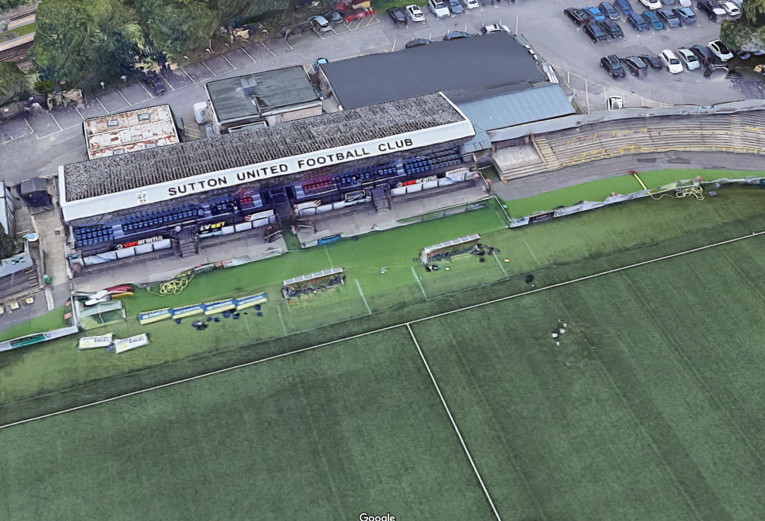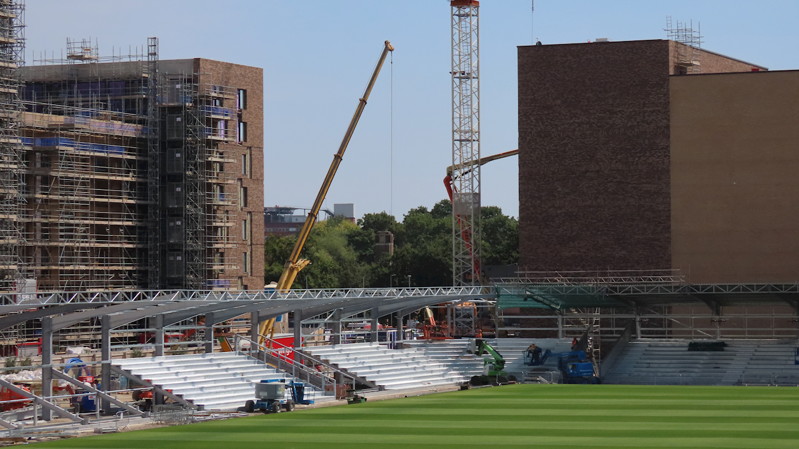Football is a beloved sport, with fans all over the world. Some fans are casual, only tuning in for major events like the World Cup or European Championship. Others are passionate supporters who go to great lengths to watch their favorite clubs play. However, not every team has a massive stadium like Wembley or Old Trafford. Some clubs focus on developing their existing grounds rather than expanding. Let’s take a look at some of the smallest stadiums in the United Kingdom by capacity.
What is the Difference Between a Ground and a Stadium?
Before we dive into the list, let’s clarify the difference between a football ground and a football stadium. While there isn’t a specific definition, the general consensus is that a ground refers to the entire location, while a stadium specifically refers to the physical building where fans watch the game. The terms are often used interchangeably, but scale is usually the determining factor.
How Football Grounds Grow
Most football clubs start with a basic grassy area surrounded by spaces for supporters to watch. As the team gains popularity, grandstands are built to accommodate more fans. Administrative offices, museums, and club shops may be added as the club’s success and demand increase. Expansion depends on the team’s success and the resources available for infrastructure development. Smaller stadiums on this list, which fans often refer to as football grounds, have the potential to become larger stadiums if the team’s success and investment allow for it.
The Stadiums
Rather than focusing solely on stadiums with the smallest capacities in the English Football League, we’ll highlight some of the more interesting stories.
Dean Court – Bournemouth
With a capacity of 11,364, Dean Court isn’t the smallest stadium in the league. However, it’s worth mentioning because it didn’t significantly expand even when Bournemouth achieved relative success. The stadium grew out of an old gravel pit donated to Boscombe F.C. in 1910. Over the years, it went through various expansions and reconstructions. The decision not to further expand the stadium during Bournemouth’s Premier League years speaks to the club’s cautious approach.
Kingsmeadow – London
Kingsmeadow is currently used by Chelsea Women and Chelsea’s Under-23s, but it used to be the home of AFC Wimbledon. Seating around 4,850 people, it has an interesting story. Originally built with a capacity of 6,299, the ground served as the home for Kingstonian F.C. before AFC Wimbledon took over. AFC Wimbledon’s decision to move to Plough Lane instead of expanding Kingsmeadow adds another layer to the stadium’s narrative.
Adams Park – High Wycombe
Xem thêm : Anoeta Stadium: Real Sociedad
Adams Park, the home of Wycombe Wanderers since 1990, replaced the old Loakes Park. The decision to move to a new venue took years, with the sale of Loakes Park funding the construction of Adams Park. Located in an industrial estate, it has seen gradual expansions. However, the stadium’s position and access limitations may hinder further expansion in the future.
Bescot Stadium – Walsall
Bescot Stadium is notable for its location near the M6 motorway. The stadium opened in 1990 after the purchase of the football club by Terry Ramsden. The original capacity of 11,104 was reduced to approximately 9,800 due to safety requirements. Plans for further expansion were considered but ultimately abandoned. This reflects the common theme that successful clubs tend to have more ambitious stadium development plans.
These stadiums demonstrate the challenges and considerations involved in football ground development. Success on the field is often crucial to securing the necessary resources for expansion. While the stadiums on this list may be small, they have the potential to grow and become even more significant in the future.
FAQs
-
What is the difference between a football ground and a stadium?
The terms are often used interchangeably, but a ground refers to the entire location, while a stadium specifically refers to the physical building where fans watch the game. -
How do football grounds grow?
They start with basic facilities and expand as the team gains popularity and demand increases. Successful clubs and available resources play a significant role in determining the extent of growth. -
Why didn’t some stadiums on the list expand further?
Stadium development relies heavily on a club’s success and available resources. If a club doesn’t experience sustained success or lacks the financial means, expansion plans may be abandoned.
Conclusion
The smallest football stadiums in the UK may not have the largest capacities, but they have their own unique stories. These stadiums highlight the challenges and considerations involved in developing football grounds. While they may be small now, who knows what the future holds for these clubs and their stadiums?
For more information about football and to stay updated on the latest news, visit Movin993.
Nguồn: https://movin993.com
Danh mục: Tin tức










